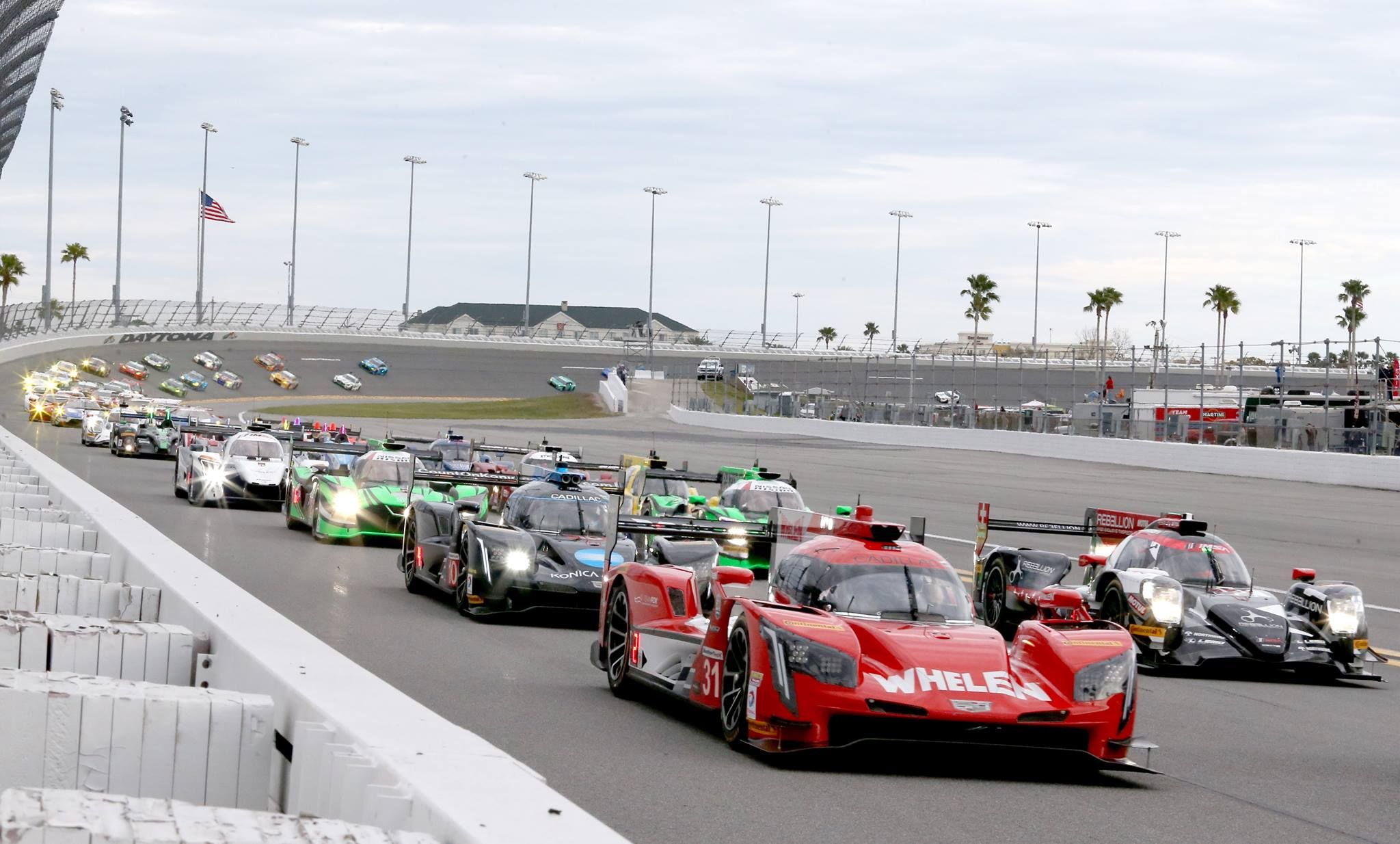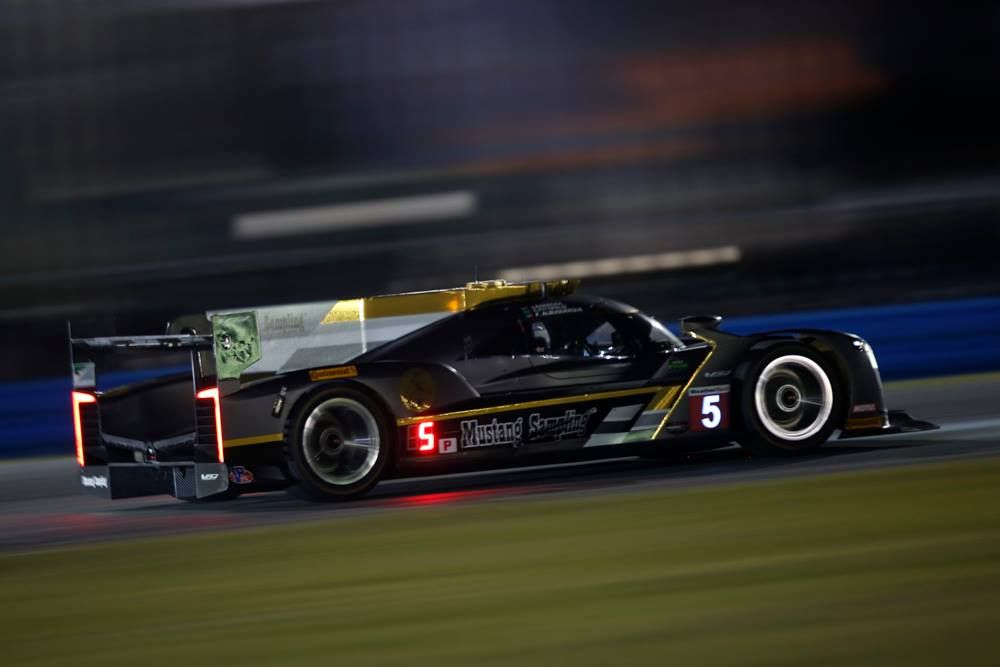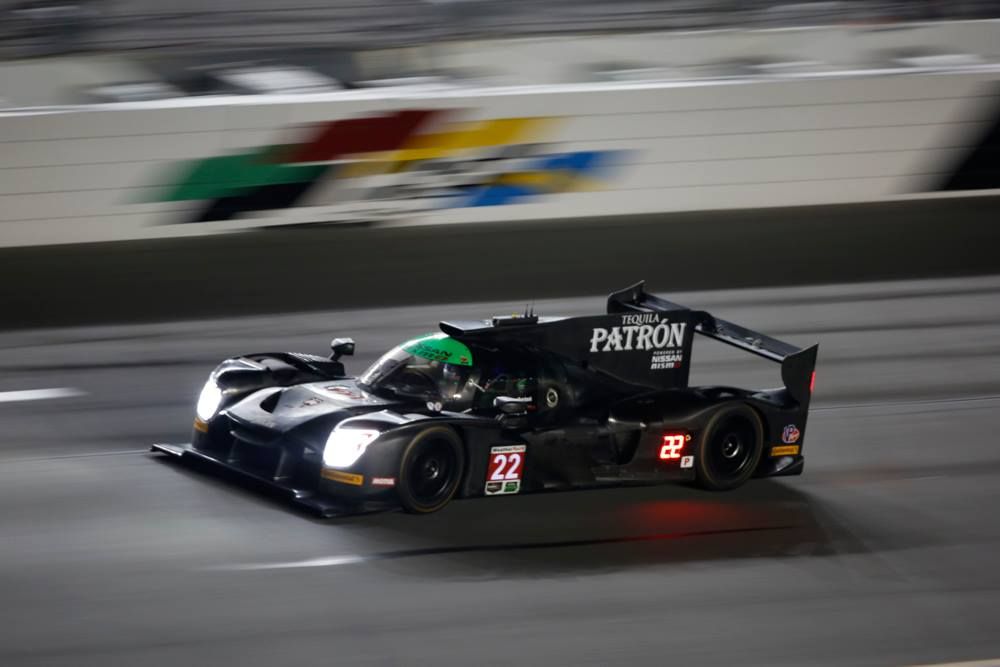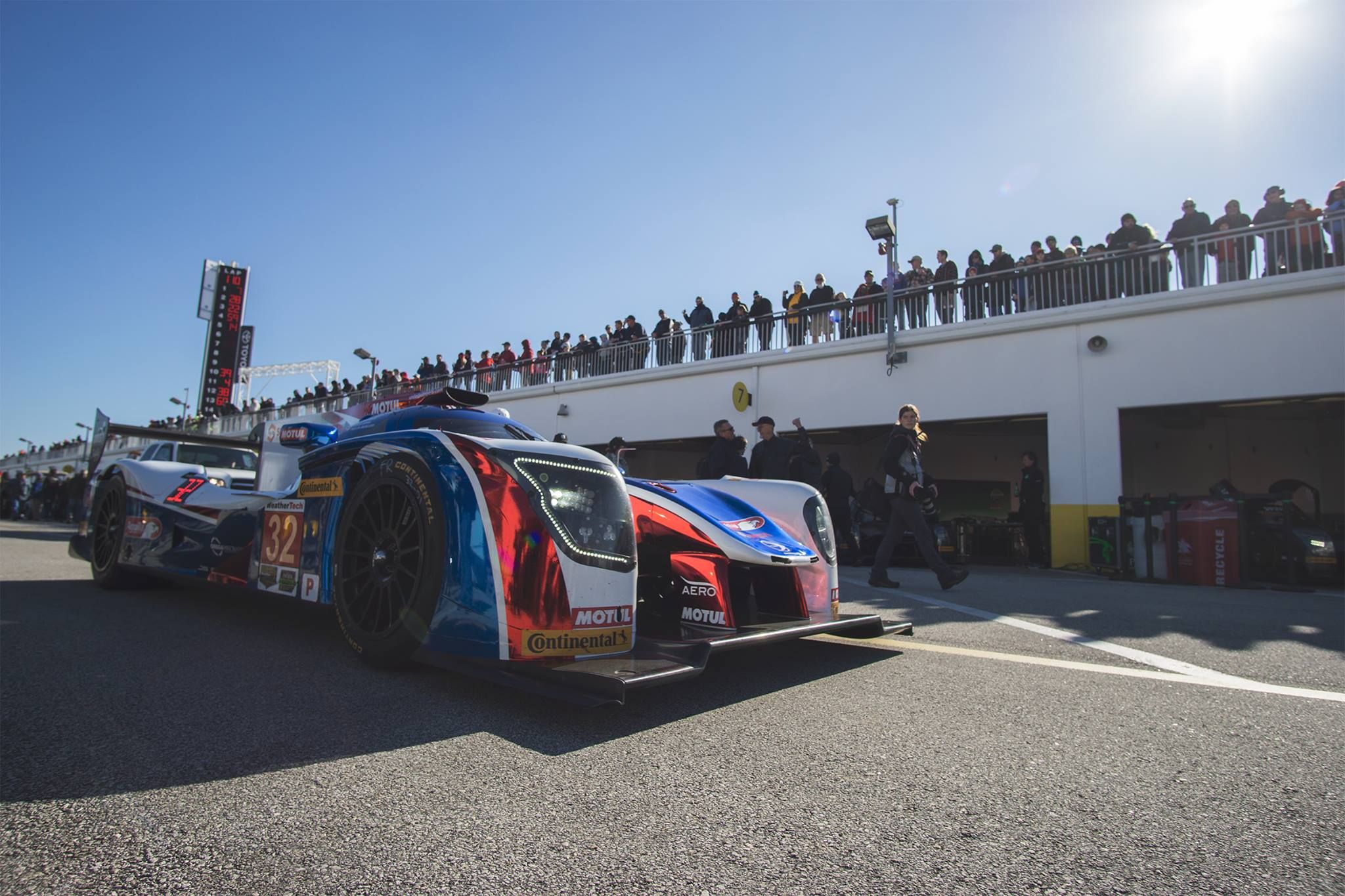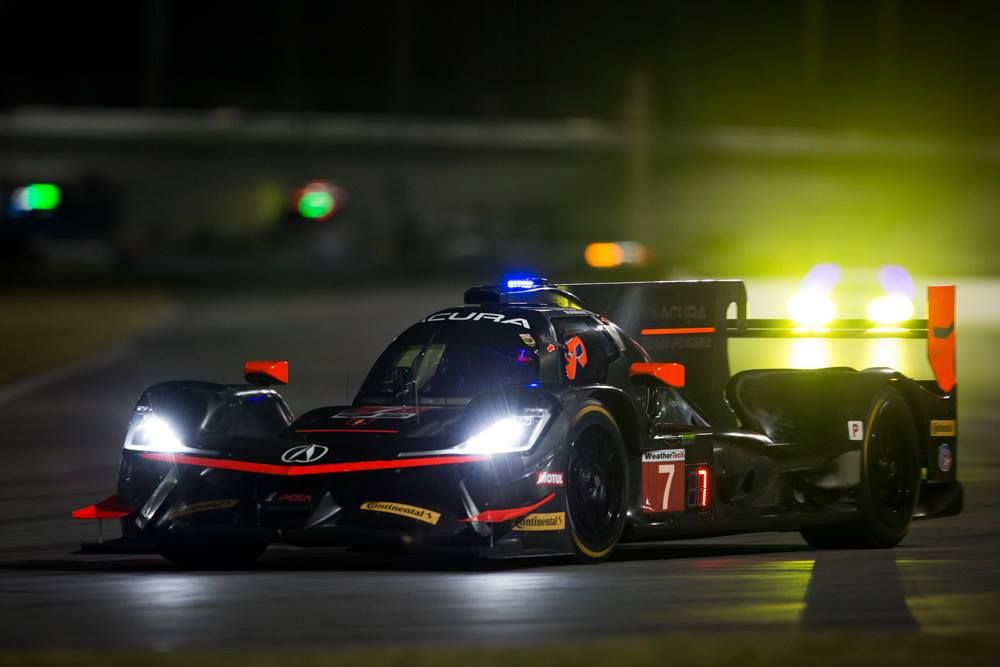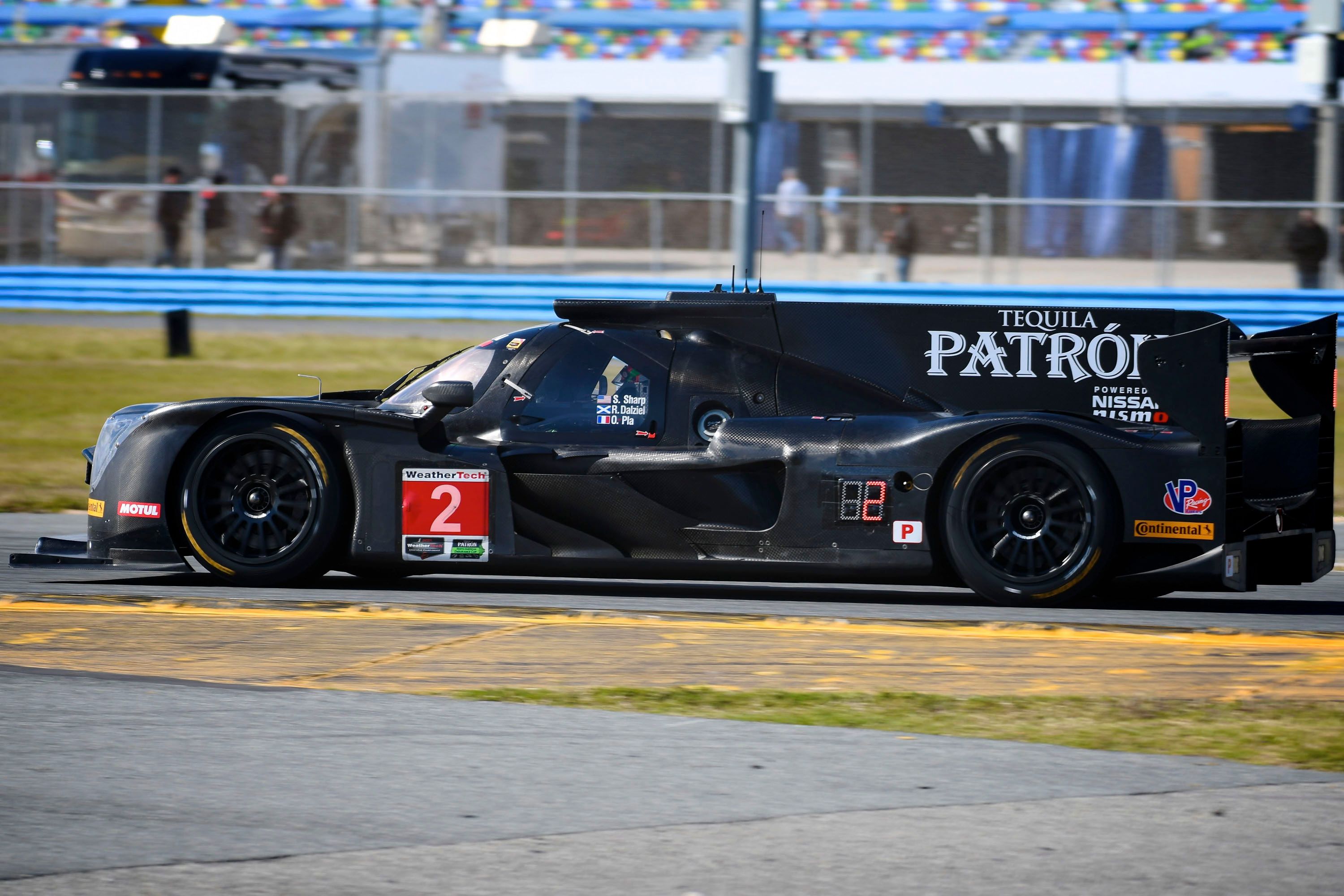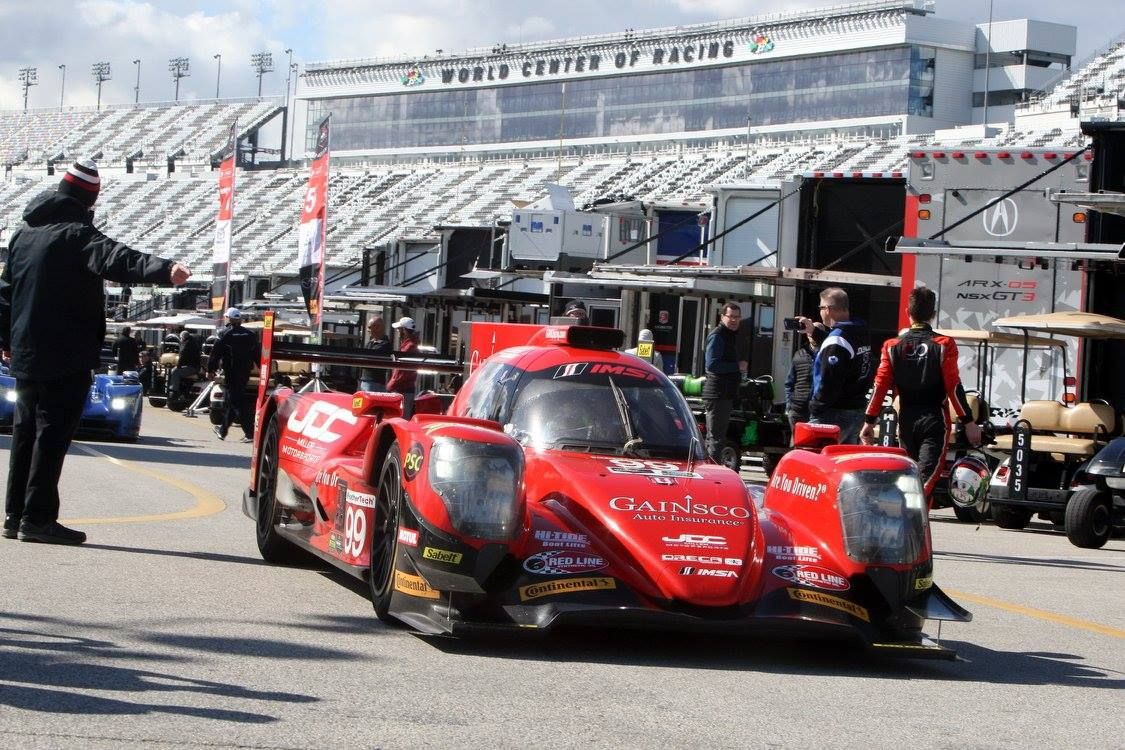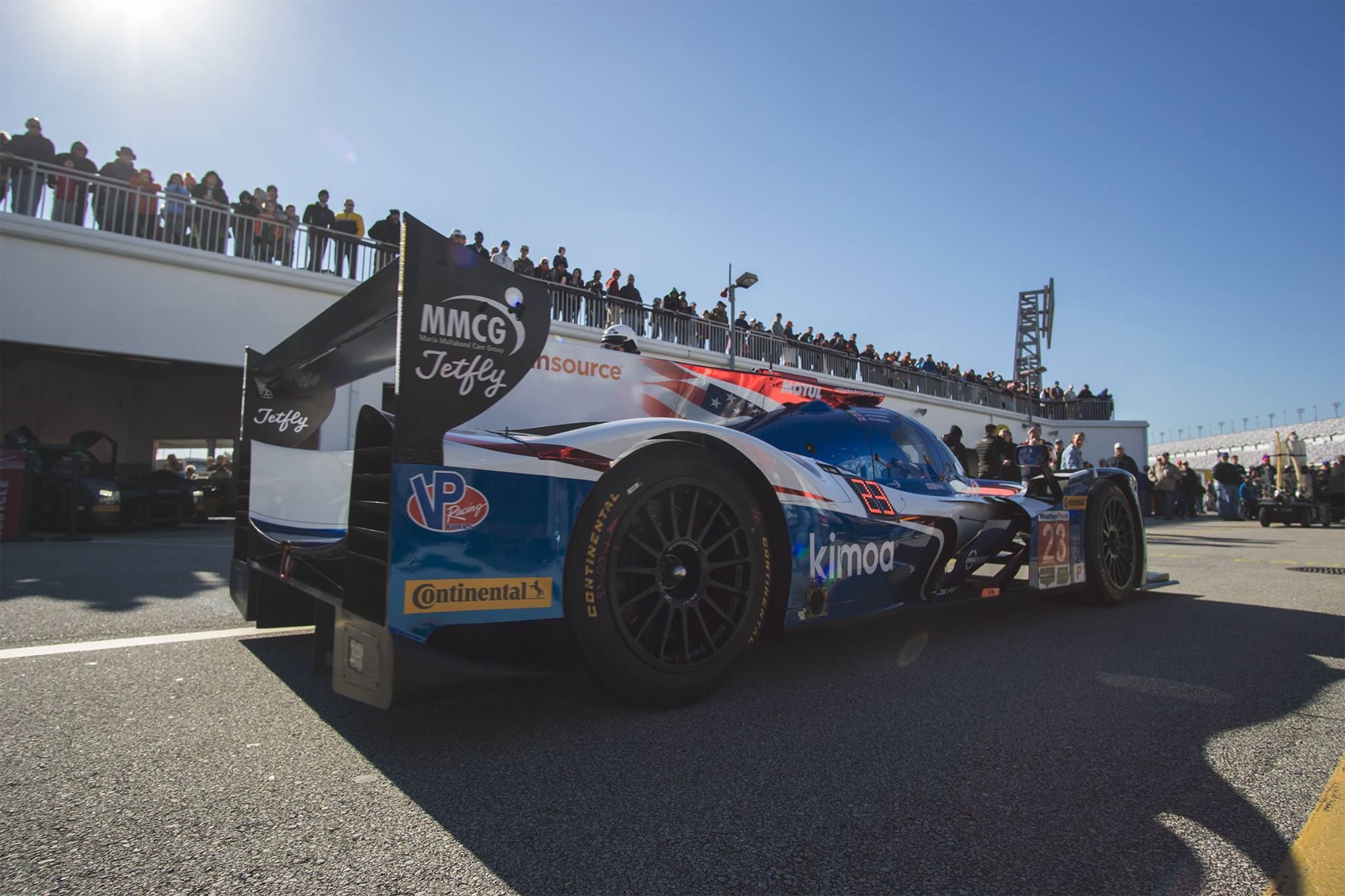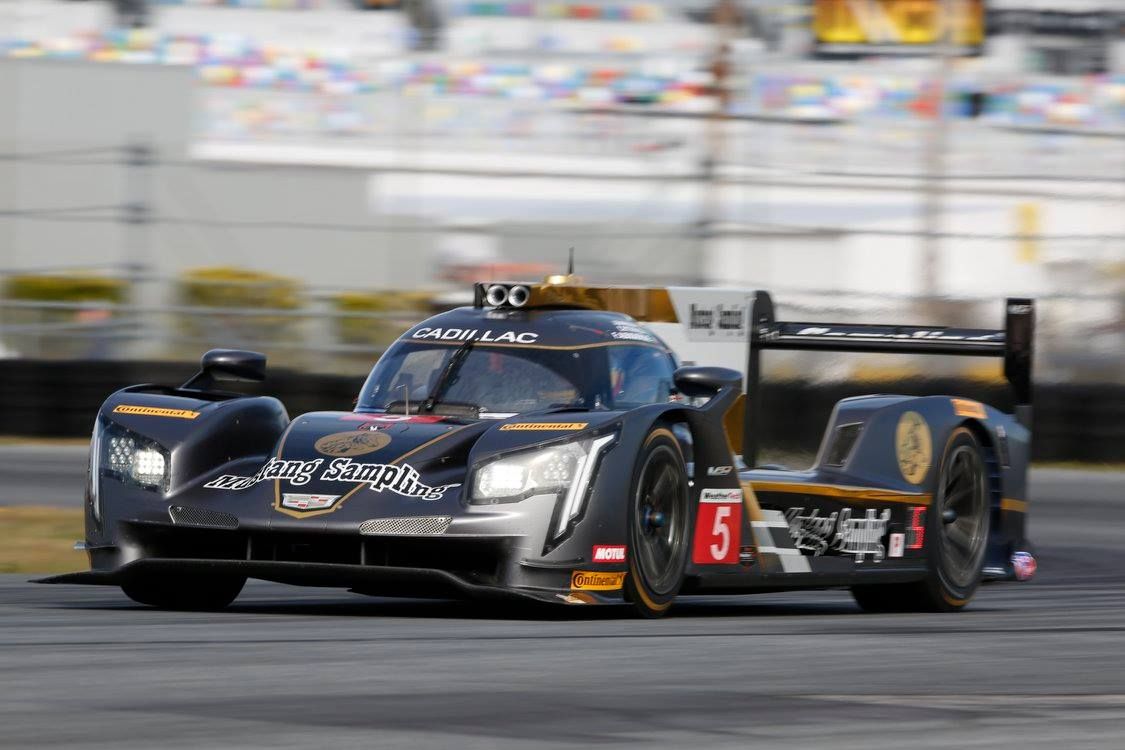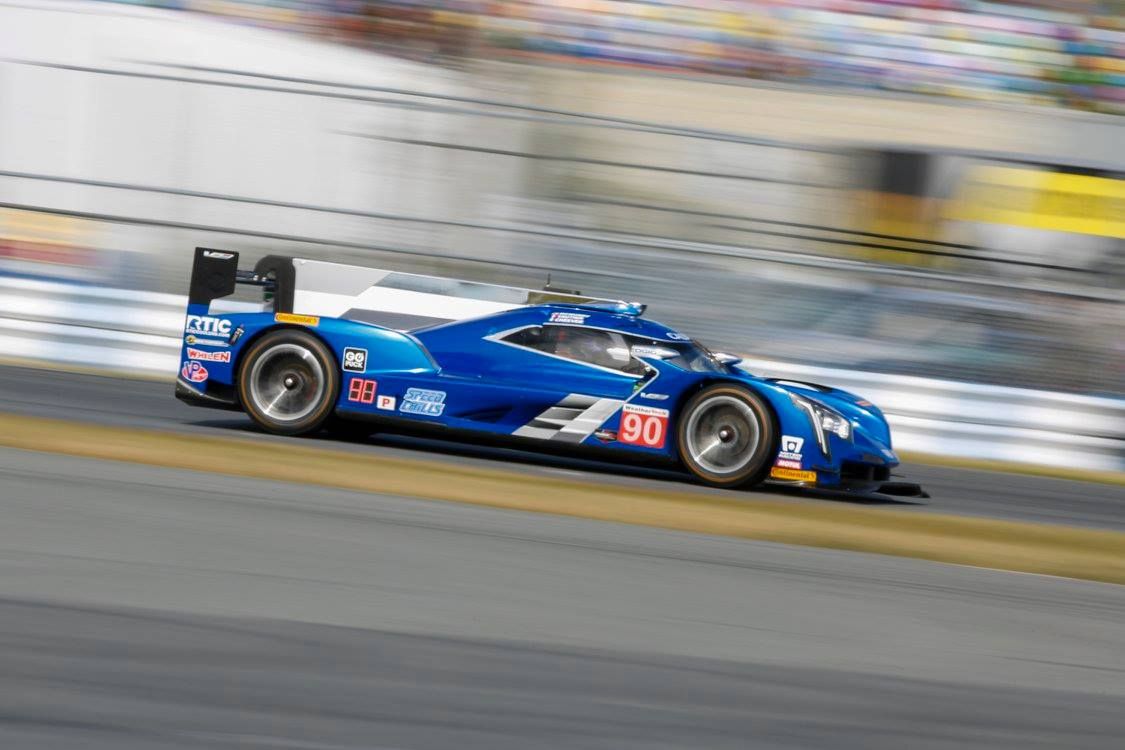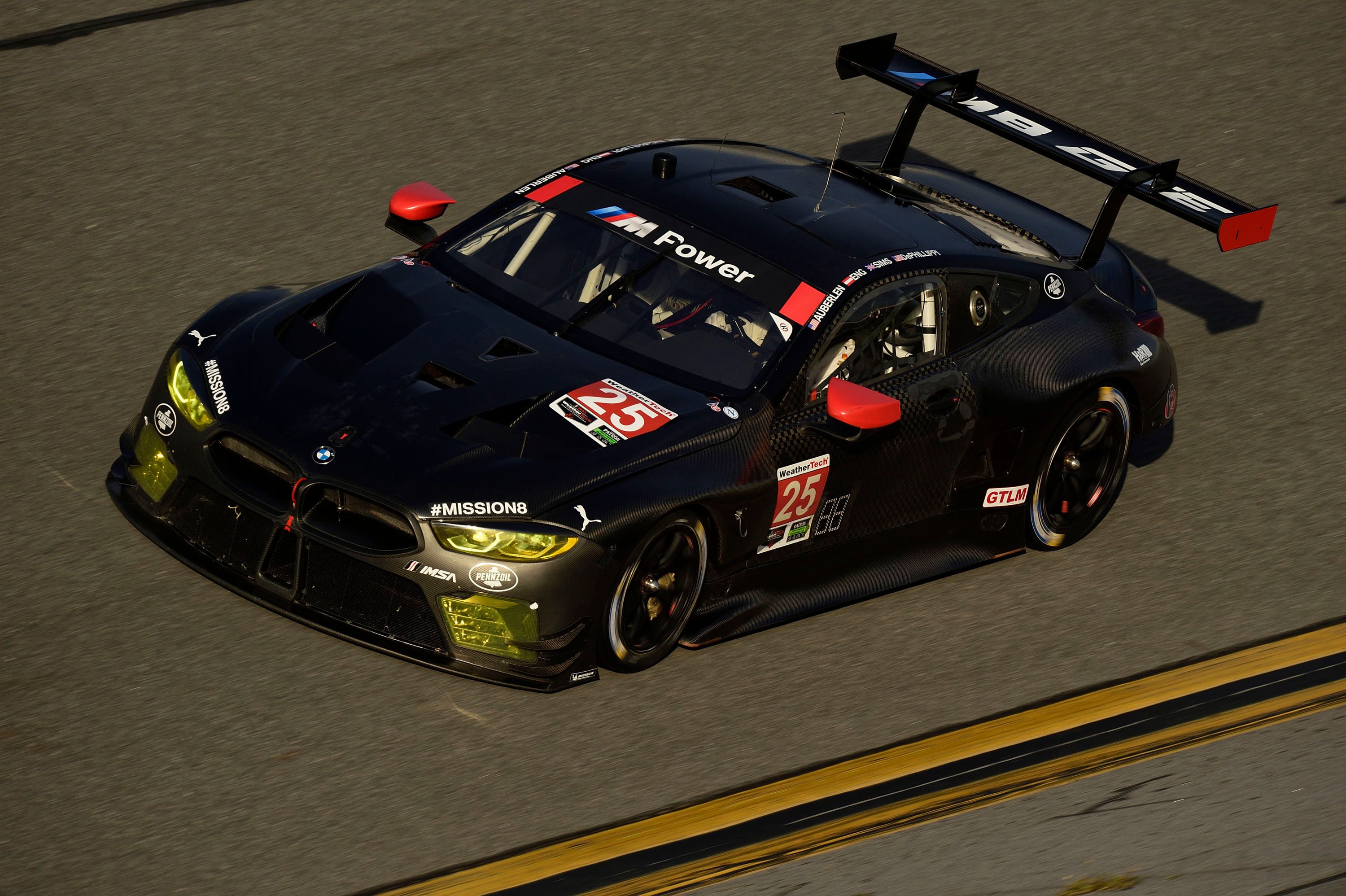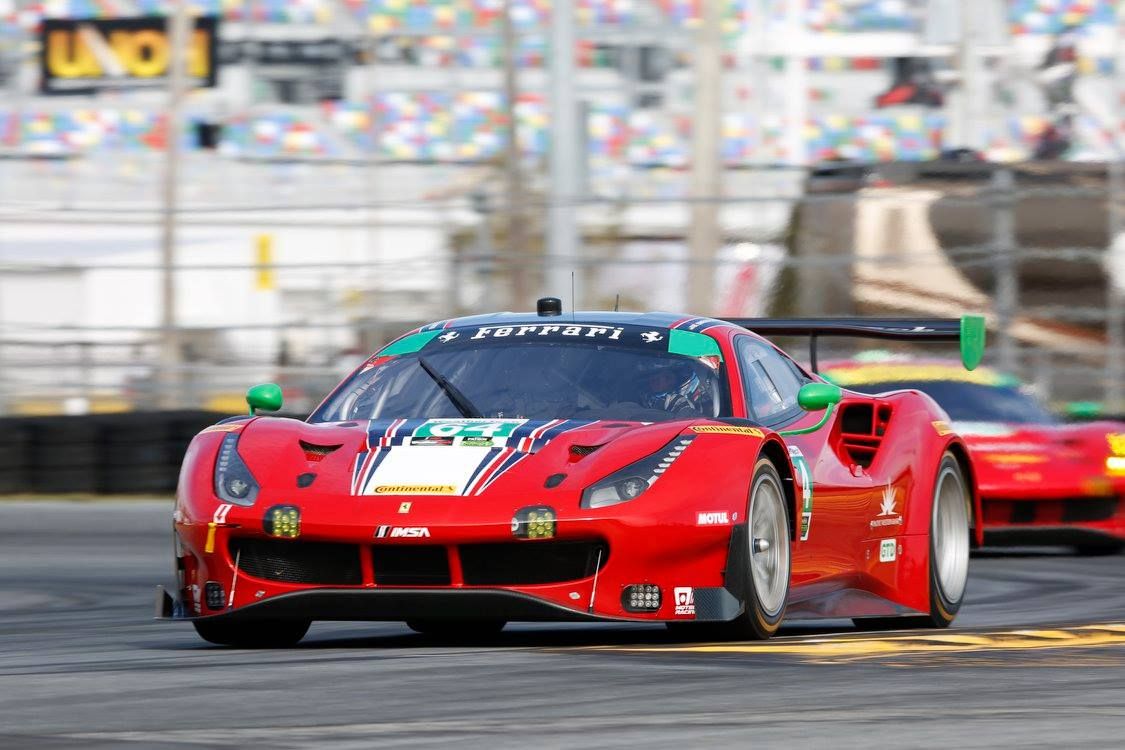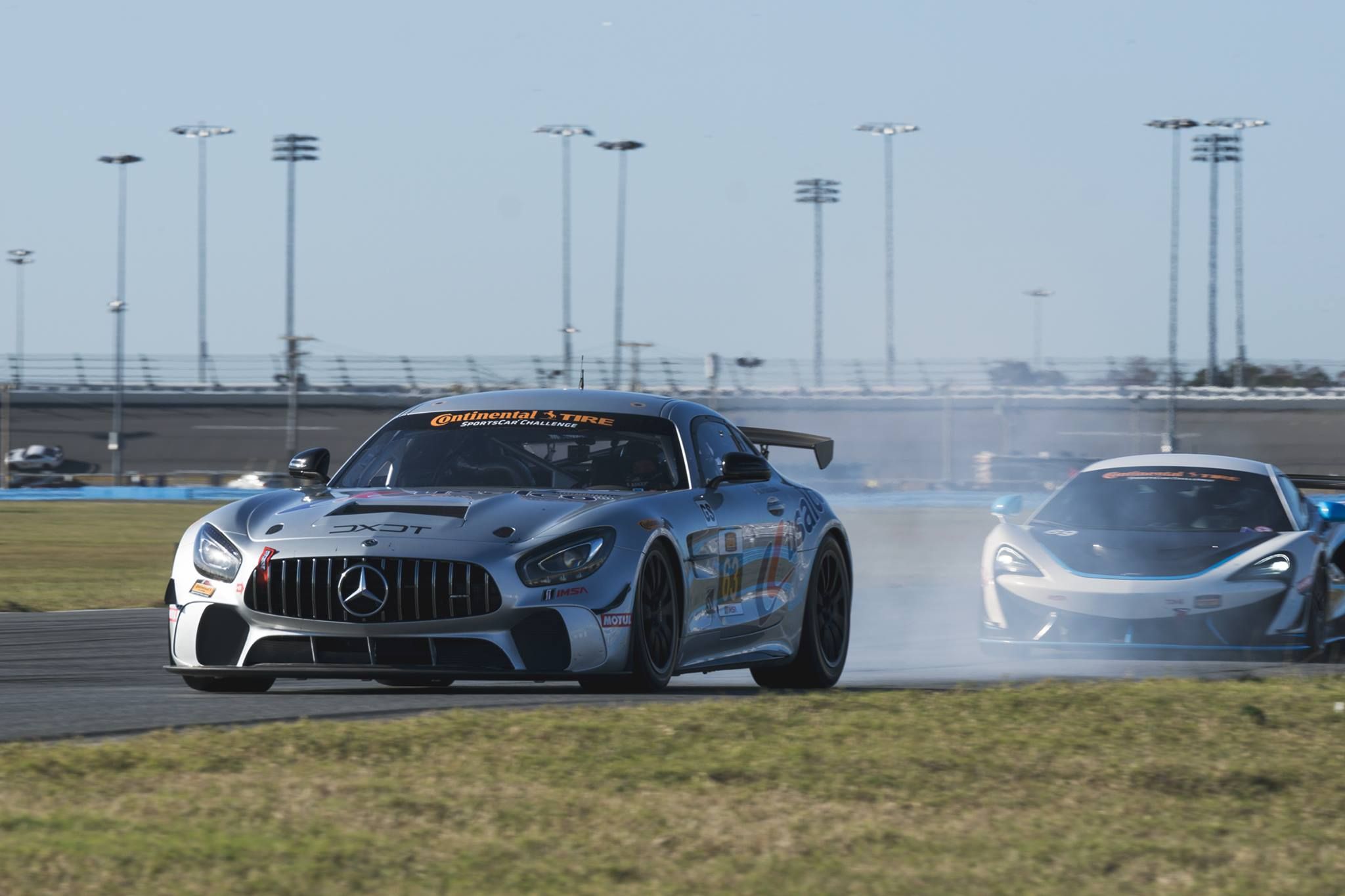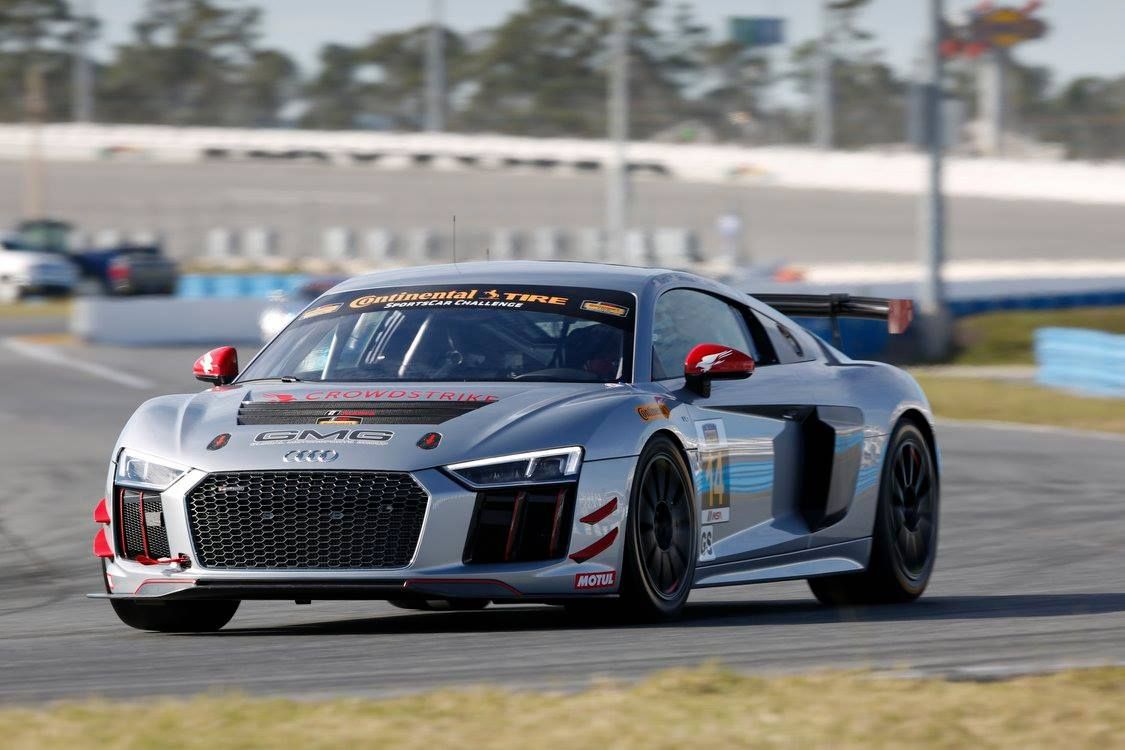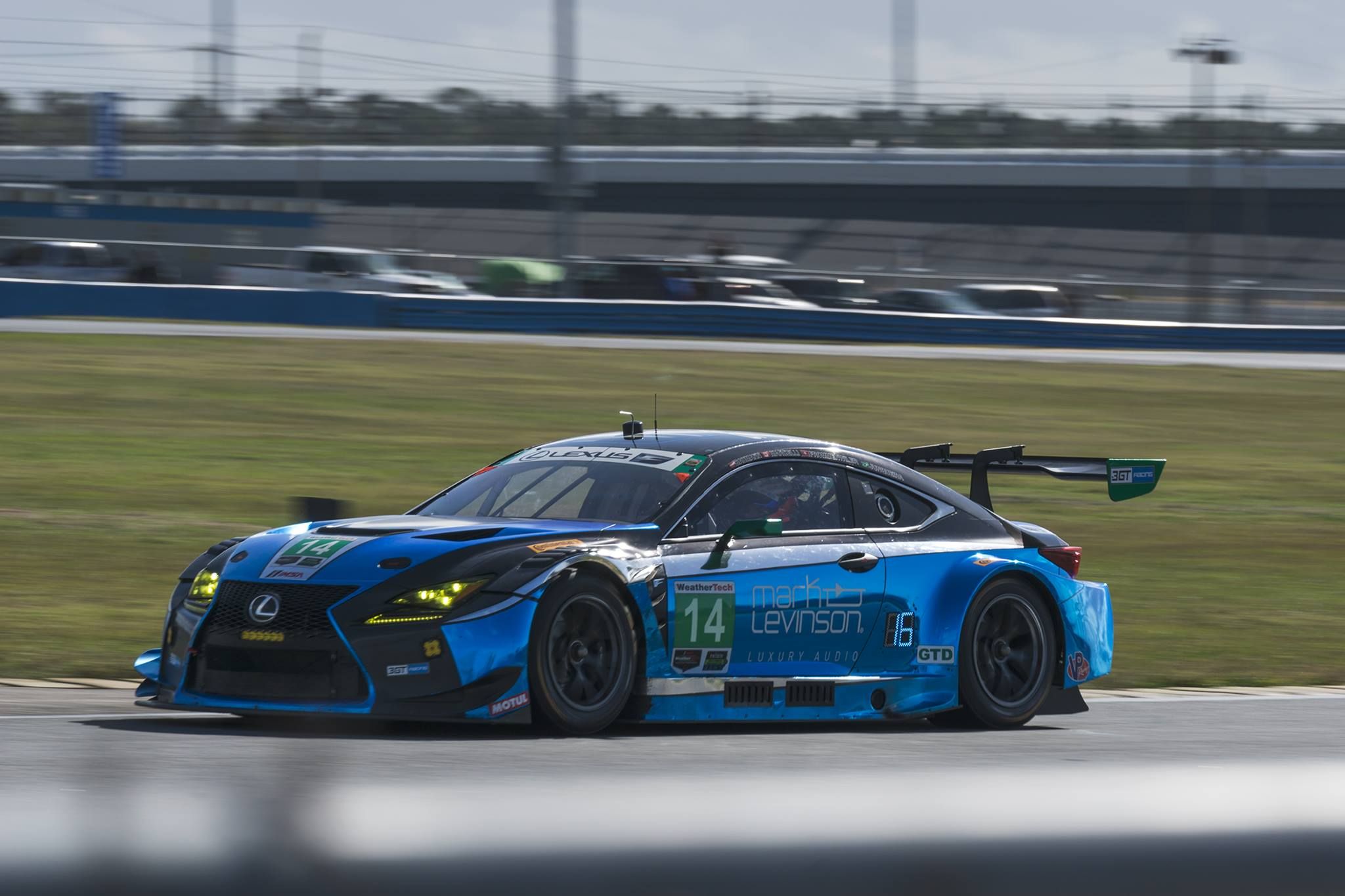It’s that time of the year again, after the Roar Before the 24, of high anticipation, when everyone thinks they have the keys to all the locked answers but, in reality, it will take the whole of the upcoming Rolex 24 Hours of Daytona to find out what’s really what. That doesn’t mean, however, that we aren’t putting together this preview for you to get in gear for what is, as ever, the longest and most difficult race in the IMSA Weathertech Sportscar Championship and, this time around, one that is buzzing with worldwide interest much more than in the last few years.
The 56th Annual Daytona 24 Hours is upon us. From the 25th through to the 28th of January, all of our eyes will follow the action at the 3.56-miles-long Daytona Speedway as 50 cars divided into three classes, Prototype, GT-Le Mans and GT-Daytona, will do battle twice-around-the-clock. It is, as per usual, the opening round of the IMSA Weathertech Sportscar Championship and it might just be the opening act to a memorable season, as I’ve talked about in my race reports in 2017.
Continue reading for the full story.
New Class Configuration
For those of you not yet up to speed with all the news – of which there are plenty – I’ll try to do a rundown of those that really matter and I’ll start with how many classes we’ve got, before we delve into each one of them. Prototype Challenge (PC) is the missing category from what we had on the plate last year, the spec prototype class being dropped from the series after first appearing in the ALMS all the way back in 2010. The venerable Chevy-powered ORECA FLM-09s saw their glory days come and pass and, as of late, the class was thoroughly depleted with a number of teams choosing the top prototype class as a natural evolution of their programs. This left only a handful of cars on the grid in 2017 and, with no foreseeable increase in interest, IMSA decided it was time to wave goodbye to the sometimes-troublesome PCs. There were discussions at one point of a possible LMP3 class to fill the bill, but that never materialized, and those cars currently compete in the IMSA Prototype Challenge.
Beyond the demise of the PC category, there are no changes in the class structure from what we’ve enjoyed in previous years. Prototype (P) still boasts a combo of Daytona Prototype International machinery as well as European ACO-compliant LMP2 beasts. Down the line, GT-Le Mans (GTLM) consists of, as the name suggests, the top tier road-based GTE cars that can also be seen in the FIA WEC.
GT-Daytona (GTD) will still be a GT3-spec class, and this is what keeps the category relevant and full of manufacturers. With that being said, this year, we expect to see much more action unfolding at the top of the ladder since there will be more prototypes than ever before in the championship’s history. For more on that and on what the other classes have to offer, as well as who is poised to do good over the 24 hours that are just around the corner you’ll have to keep scrolling.
So, now that we’ve pieced together the general picture, here’s a more in-depth look at how the 50-strong field shapes up to be. Everyone involved has already gone through the now-mandatory Roar Before the 24 test and, prior to that, there was also a test in December, but this doesn’t mean we truly know where everyone’s at – quite the opposite. The weather is also a bit of an uncertainty with high humidity on Saturday and a 70% probability of rain on Sunday – at the time of writing. The temperature during the day won’t probably leap much over 70F so it will get quite cold during the long hours of darkness.
Prototype Class
The top class of the field will be mightier than ever. No fewer than 20 cars will take part, with an even number of DPIs and LMP2s. The 10 IMSA-only cars come courtesy of Cadillac, Nissan, Acura, and Mazda. Meanwhile, we will see P2s from Ligier, ORECA, and Riley. As such, only Dallara is missing from a complete palette of modern second-tier prototypes. Racing Team Nederland and Villorba Corse from Italy both looked at entering their Dallaras at Daytona, but none went through with it, sadly.
After last year’s tour de force, Cadillac again proves to be the most popular DPI manufacturer with a total of four cars entered for Daytona, as well as the full IMSA season: two for Action Express Racing (No. 5 and No. 31), one for Wayne Taylor Racing (No. 10) and one for Spirit of Daytona Racing (No. 90), the former VisitFlorida.com Racing squad of Troy Flis.
AXR has shaken up its driver lineup ahead of this season, and the No. 5 will feature Filipe Albuquerque alongside Joao Barbosa for the full season with Christian Fittipaldi filling in as driver no. 3, besides his new job as sporting director. The car was third quickest in the Roar qualifying session for garage slots. Albuquerque managed a 1:36.135, behind two other Cadillacs. In fact, the fastest car was the sister AXR car. Whelen’s machine was unbeatable with Felipe Nasr at the wheel, the Brazilian being the only man who divided into the 1:35s. He will also be Eric Curran’s new full-season team-mate while Mike Conway will be the third driver, AXR also recruiting Stuart Middleton for Daytona.
In between the Action Express sandwich was Tristan Vautier who moves up from GTD to partner Matt McMurry in the blue Cadillac. The car will also be driven by Eddie Cheever III in the North-American Endurance Cup events most likely. The last of the four Cadillacs was, frustratingly for the opposition, fourth in the Roar qualifying. Wayne Taylor’s car, which also features a different driver roaster, was driven to a 1:36.481 by Jordan Taylor’s new team-mate, Renger van der Zande. Ryan Hunter-Reay will be the third man in the No. 10 Konica Minolta-sponsored car which won five races in succession last season en-route to the title. This success brought Ricky Taylor to the attention of Roger Penske, but we’ll talk about that below.
So, the Cadillacs dominated at the Roar, and they have a fleet of new drivers. Will they also dominate the race? IMSA tried to make sure that won’t be the case as they rolled a series of Balance of Performance (BoP) changes ahead of next weekend’s race. The Caddy’s new 5.5-liter V8 sees its air intake openings reduced by 0.6 mm but, on the other hand, will benefit from an extra liter in fuel tank capacity as well as quicker fuel flow during pit stops since the nozzle was increased by 0.5 mm. We’ll have to wait until the proper qualifying session and then the race proper to see the full effects of these changes (if there are any).
Moving on to the greatest head-turner in the Prototype paddock – Acura. When months of rumors were ended by Penske’s announcement that they will, indeed, participate in IMSA, everyone was eager to see The Captain’s team back in endurance. The squad already showed its potential in last year’s Petit Le Mans where it came close to winning with an LMP2-spec ORECA, ultimately finishing third overall. That was, though, just a trial run and this year they will campaign a pair of Acura ARX-05 prototypes which are based, obviously, on the ORECA chassis.
The cars were the best of the rest at the Roar, qualifying fifth and sixth overall with a 1:36.988 and a 1:37.231 respectively. While that’s over a second behind Nasr’s lap, there’s no shortage of talent that could make up for a car that’s maybe lacking in ultimate speed. For starters, we have Helio Castroneves and Ricky Taylor in the No. 7 for the entirety of the year, with Graham Rahal as no. 3 driver. On the other side of the garage, aboard the No. 6, which was the faster of the two Acuras, there will be Columbian Juan-Pablo Montoya and Dane Cameron doing full duty, with Indy champion (and ex Peugeot LMP1 driver) Simon Pagenaud driving in the NAEC rounds.
The six drivers are strong and, after Petit Le Mans, the team is oiled up and ready for another go at endurance racing. The car is brand-new so that could be something to worry about although we’re talking about Penske and their impeccable preparation so it might not be that big of a factor. The ARX-05 also received an increase in fuel tank capacity by four liters and a bigger fuel nozzle, increased with 1.5mm.
The Tequila Patron ESM team had its fastest car (No. 22) in P7 at the Roar, and it will run with a restyled Nissan-Ligier DPI. There will be, however, some consistency as far as driver pairings go: Johannes van Overbeek will be driving with Pipo Derani in the No. 22 while the No. 2 will be driven by Scott Sharp and Ryan Dalziel. Team boss Ed Brown has retired from driving prototypes and, in turn, the third seat in each car will be filled by Nicolas Lapierre and Olivier Pla. It’s uncertain if both of them will continue in the rest of the NAEC rounds or not. What’s certain is that Brendon Hartley won’t return either. The Nissan will also have two more liters of fuel in its tank and a 1.5mm-larger fueling nozzle. Otherwise, the car has proven fast, especially when Derani is doing the driving, but reliability has been a case of hit-and-miss in 2017. They’ll need to be flawless in that department to fight against the likes of Cadillac and Acura.
The last of the DPI manufacturers, Mazda, was also a headliner in the news when the Joest partnership was announced. Reinhold Joest’s operation took a year-long hiatus after the end of the Audi Sport WEC deal but is now back with an updated Mazda (remember the discussions with the ACO/IMSA on upgrades that are not part of the single approved joker during the car’s four-year lifespan… that’s what this is about). The beautiful RT24-P isn’t, though, faster than last year. The fastest of the pair was eighth quickest, almost 1.5 seconds behind the fastest Cadillac. The other one was the slowest of all the 20 prototypes…
Since Speedsource is out of the picture, driver pairings have also changed with an infusion of drivers close to Joest. Car No. 55 will be driven by Jonathan Bomarito and Spencer Pigot while Harry Tincknell will be the third man in the car. The sister car will be driven full-time by Oliver Jarvis an Tristan Nunez, and fellow Audi-man Rene Rast will be the endurance specialist. Besides certain upgrades that will also be given to the base Riley P2 car, the Mazda also received 15-kilogram decrease in total weight and a rev limiter increase.
On the other hand, it did lose boost at the top and bottom of the rev range of its 2.0-liter turbo engine. Finally, the fule nozzle was increased by 0.5 mm. Speedsource amassed a respectable amount of near-misses during its stint as the works Mazda team as they had only themselves to blame for missing the elusive win on more than one occasion. Mazda hopes that Joest, with its age-old involvement in sportscar racing, will be more efficient in bringing in silverware and that has to start at Daytona although that looks rather unlikely with all things considered.
I think I’ve managed to not mention Alonso for long enough so I’ll start with him and with United Autosport’s effort – although the Ligier wasn’t the quicker of the P2 contenders.
Yes, thanks to the fact that Zak Brown still has a word in how United Autosport is run – and is the boss of McLaren – Fernando Alonso, the two-time F1 World Champions (2005 and 2006 with Renault) – will make his Daytona 24 Hours debut in a prototype. He will share the No. 23 with Asian LMS champ Phil Hanson and McLaren test driver Lando Norris. This decision could be just a step in Alonso’s bid to tackle the 24 Hours of Le Mans before a return to Indy 500 to complete the “Triple Crown.” The split focus isn’t, however, seen as something positive by all of Alonso’s peers. Former rival in F1 and Porsche WEC stalwart Mark Webber was adamant that “today’s F1 is so specific that does not allow gaps.” The Australian added that “It’s a mistake” to run this race and possibly Le Mans since it won’t be in any way beneficial to Fernando.
Beyond Webber’s somewhat bitter comments, the Spaniard was the quickest Ligier driver, trailing three ORECAs. While this effort will, most likely, not feature in the fight for the overall honors, it’s great for the series in general. Also, United will enter a second Ligier for Will Owen, Hugo de Sadaleer, Paul di Resta and Bruno Senna – a great lineup in its own right. None of these cars will do the full season, but we will have one Ligier that has signed up for the full gig: the No. 52 AFS/PR1 Mathiasen Motorsport machine of Sebastian Saavedra, Gustavo Yacaman, Roberto Gonzalez and Nick Boulle. The first two will be partnered for the whole year.
With the Ligiers out of the way, we get to the only real threat to the sleuth of DPIs: Hughues de Chauanc’s ORECAs. Even with Rebellion Racing’s decision to not run at Daytona s they focus on their WEC LMP1 return, there will be a total of six 07 P2s: two for JDC-Miller, two for Jackie Chan DC Racing, one for Performance Tech and one for CORE Autosport. The last two move from PC and GTD respectively to the prototype ranks.
JDC-Miller were maybe the most prominent in the news after it was announced that the Gainsco “Red Dragon” will return to racing, despite the end of Bob Stallings’ team. This was made possible after an agreement was signed with team JDC to run two ORECAs, the usual yellow “Banana Boat,” and the “Red Dragon.” Simon Trummer of Switzerland and Robert Alon will feature full-season in the No. 85 yellow car and will be helped by Austin Cindric and Devlin DeFrancesco at Daytona. The No. 99 sister-car will be driven by JDC regulars Stephen Simpson and Misha Goikhberg with Chris Miller and Gustavo Menezes lending their help for the twice-around-the-clock race. Sadly, Jon Fogarty will not return to the Gainsco prototype.
The Jackie Chan DC Racing Team’s cars (prepped by Jota Sport) were first and fourth among the P2 runners in the Roar qualy, sandwiching the two JDC ORECAs. Both the No. 78 and the No. 37 have strong lineups of endurance rookies and veterans. The former will be driven by Ho Pin-Tung, Alex Brundle, Antonio Felix da Costa and youngster Ferdinand of Habsburg who impressed in the Macau GP F3 race. The other car will be handled by Daniel Juncadella, Robin Frijns, Felix Rosenqvist and Williams F1 driver Lance Stroll. For the Canadian, it’s just for fun but Frijns and Juncadella, usually seen in GT3 Mercedes and Audi machinery, will take it very seriously, as will Rosenqvist so both of Jackie Chan’s cars could punch...
Finally, we have PC champions Performance Tech and CORE Autosport’s own entry. If Performance Tech brings James French as the hotshoe of the trio alongside Kyle Mason and Patricio O’Ward, CORE has Romain Dumas and Loic Duval ready to boost its Daytona lineup alongside the usual pairing of Colin Braun and Jon Bennett. They were only 19th at the Roar but the ex Audi/Porsche men will surely be feisty in the race proper. Last but not least we have the car that just beat CORE – BAR1 Motorsport. Their Riley/Multimatic car is the ex-VisitFlorida.com chassis, and it will be driven by former Mazda driver Joel Miller, as well as Marc Drumwright and Ryan Cullen. Eric Lux was also announced as part of this effort but did not drive at the Roar. The team’s hopes are all in the new updates that should ensure the car at least doesn’t fall apart during the 24 hours.
All in all, the mix of cars and driver talent is eclectic and, to be honest, the best in the world. It’s light years ahead of the WEC’s ORECA show and also the much less high-level operations of the European Le Mans Series. This race should go down into the history books if we’ll also have rain – but not too much, since nobody likes long interruptions due to a wet track…
Now, if your question is ‘Will Cadillac run away with this one like it did in 2017?’, I don’t have a straight answer. If that will, indeed, be the case, at least there will be four cars with fairly equal chances – not three like last year!
GT-Le Mans Class
The top GT category will have a tough time being the most enthralling class to watch at this year’s Rolex 24 with so many cars lined up just above them, in Prototype. Ford, Ferrari, Porsche, BMW and Chevy will do their best – we’re sure of that. Everyone other than BMW returns with familiar equipment and, as expected, the new car from BMW is the one that’s attracted the bulk of the issues. We’ll start with them since Jens Marquardt, BMW Motorsport boss, was kind enough to explain their hardships.
Remember how Ford asked every other manufacturer involved if they’ll basically let them run a car that did not have (yet) a road-going counterpart and they all agreed? That’s the same that BMW tried to do, asking for a waiver to be able to roll its new M8 GTE with a lower side profile. “What we were initially told was OK, was all of a sudden not OK anymore,” said Marquardt. He also added that “Our initial target was, having discussed with IMSA, to get it within the ballpark of all the frontal areas of all the other cars.”
With the final decision coming very late, after one of the manufacturers denied BMW’s waiver, the German manufacturer had to push back on its testing program for the new car since the initial design was quite far along into development. This meant that the initial tests began in July of last year, not February as initially intended. With only three months of testing under the car’s belt before its homologation was set in stone, the setback was evident at the Roar.
The quickest of the two M8s was a massive 1.4-seconds behind the pace-setting Ford while the other car was a further 1.7 seconds adrift. IMSA hopes to minimize the disparity after its pre-race BoP tweak which made the M8 10 kilograms lighter, increased its boost throughout the 7000 rpm rev range and added six liters of fuel to the capacity of the tank.
Also, the fuel will flow faster through the nozzle that was increased by three mm. If this will actually help it is left to be seen, but if it won’t, it will probably not be due to the drivers. BMW will have Alex Sims, Bill Auberlen, Connor de Phillipi, Phillip Eng and Colton Herta ready in the No. 25 while the No. 24 will be piloted by Jess Krohn, John Edwards, Nicky Catsburg, Augusto Farfus and the same Herta who will pull double duty. The two Rahal Letterman Lanigan Racing-entered cars should be, at least, quite safe on the reliability side as BMW did clock over 10,000 miles in testing without major issues, as well as a 23.5-hours-long endurance test.
As mentioned, Ford was the quickest (1:43.610) at the test with the No. 66 of Joey Hand, Dirk Mueller, and Sebastien Bourdais. The No. 67 Chip Ganassi Racing chassis was third and will be driven by the usually-flawless trio of Scott Dixon, Ryan Riscoe, and Richard Westbrook. The latter two will do the full season while Hand and Mueller will again team in the sister car. The team won at Daytona last year with the No. 66 and they also finished second in the championship last year (both in the Driver’s rankings and in the Manufacturer fight with Chevrolet). The No. 66 hasn’t won in IMSA since Road America last year while the No. 67’s run of podiums in 2017 can’t hide the fact that its last win was in 2016 at Canadian Tire Motorsport Park… they’re definitely eager for more in 2018.
GM’s Corvette Racing managed a clean sweep in IMSA last season, narrowly missing on the Le Mans win as well. This year, the aging C7.R might not be able to fight for the crown again, but Gavin tried to dash such claims on the way to P2 in the Roar qualifying session. He’ll again be partnered by Tommy Milner and Marcel Fassler in the No. 4 while the No. 3 will be driven by defending series champions Antonio Garcia, Jan Magnussen and Mike Rockenfeller. Even with an old car, it’s hard to bet against Corvette in the longer races.
Porsche’s louder-than-loud mid-engined 991 GTE was quick last year, but results eluded the duo of Gianmaria Bruni and Laurens Vanthoor. This year, Porsche will shake up its driver lineups in the wake of their decision to leave the FIA WEC P1 class. The move means that we’ll see 2015 GTLM champion Patrick Pilet return to a full-time seat in the No. 911 car alongside Nick Tandy. Fred Makowiecki will make up this lineup in the NAEC races. The No. 912 car will again feature Laurens Vanthoor as well as Le Mans winner Earl Bamber back for the whole season. Bruni will only drive in the longer events. With the know-how and a car that already has many racing miles under its belt, Porsche is again a very serious contender.
At the end of the GTLM pile, we have a car that usually managed to make its way to the top: the No. 62 Risi Ferrari. Again the lone Prancing Horse in the class, Giuseppe Risi’s entry will feature top Ferrari men Alessandro Pier Guidi, Toni Vilander and James Calado. What it will not feature is any full-season drivers since Giuseppe decided it will run select races throughout 2018. Last year, the 488 GTE only showed up seven times but finished on the podium on five occasions. The red car is always one to keep a keen eye on – and this time it isn’t Risi’s only entry!
Trying to pick a winner in GTLM is almost futile. All cars but for BMW should have equal chances and it will be all about how the race will go on and how every squad will work its way through traffic. As Oliver Gavin pointed out, restarts will be harder than before with so many prototypes that, usually, get their tires up to temperature slower than the GTLM cars do – it’s gonna be a lottery here as well then.
GT-Daytona Class
If you watched the 13th running of the Dubai 24 Hours, you would have noticed Grasser Racing Team’s heroic crawl back to a podium position after early trouble sidelined the pole-sitting team. That exact outfit was quickest in the GTD qualifying at the Roar. The No. 11 Huracan of Rolf Ineichen, Mirko Bortolotti, Franck Perera and Rik Breukers managed a 1:47.374 lap around the Daytona Roval. Bortolotti is the reigning Blancpain GT Series Champion, so it’s no wonder he’s fast any day of the week. If the Lamborghini holds itself together, they will surely be a threat. With that being said, Gottfried Grasser’s team will bring a second Huracan (No. 19) for good measure. This one will be driven by Christian Engelhart, Max van Splunteren, Ezequiel Perez Companc, Luis Machiels and Christopher Lenz.
There is one more Lamborghini Huracan on the entry list – the only one that will run the full season. Paul Miller is the entrant and, as per usual, the No. 48 of Madison Snow, Bryan Sellers, Andrea Caldarelli and Bryce Miller is sharp looking and, just as much, an interesting proposition for the title fight. In the BoP shakeup, the Lambo received a smaller air restrictor by 1mm and a smaller fuel tank capacity by three liters as well as a smaller fuel nozzle by one mm.
Ferrari is the better-represented marque in the Italian camp with four 488 GTEs. Two of these will be entered by defending champions Scuderia Corsa. The team expands to two cars as one receives Weathertech sponsorship. That’s the No. 63 car which will be driven by Cooper MacNeil and Alessandro Balzan in all of the races. Gunnar Jeanette and Jeff Segal complete this lineup that misses Christina Nielsen who was dropped from the lineup after the Weathertech deal took place. Keep reading to see where she ended up.
The other Scuderia Corsa 488 GT3 (No. 64) will be driven by Sam Bird, Frankie Montecalvo and two familiar faces within the team: Townsend Bell and Bill Sweedler- who’ve also performed very well at Le Mans with this outfit in GTE-Am. Spirit of Race returns with a single car for a quartet of Aston-Martin drivers, strangely. Paul Dalla-Lana brought his team-mates Mathias Lauda and Pedro Lamy to drive this Prancing Horse alongside Dunlop-man Daniel Serra. Sadly, although we get Aston-Martin works drivers, we don’t get any Vantage on the grid. Same goes for McLaren although both marques are partners of the series.
As I’ve said before, Risi will enter a second car and it’s a GTD entry: the No. 82 for Santiago Creel, Martin Fuentes, Matt Griffin, Miguel Molina and Ricardo Perez de Lara. It’s worth noting that the Ferraris will benefit from larger fuel tanks (two liters added) and faster fuel flow due to the bigger fuel nozzle (by just half a millimeter).
Mercedes-Benz gave last season’s NAEC champions in the form of the Riley AMG GT3 of Ben Keating and Jeroen Bleekemolen. Bill Riley’s team will return as a single-car effort, the Dutch and the American again doing the full season. They will be aided at Daytona by Luca Stolz and Adam Christodolou. Both are Mercedes drivers, so they know the ins and outs of the No. 33 car. P1 Motorsports (No. 71) and SunEnergy1 Racing (No. 75) will also field Mercedes cars.
The latter features Mercedes works drivers Maro Engel and Thomas Jaeger but, with Tristan Vautier vaulting to the top class, Mikael Grenier will team with Kenny Habul for the rest of the season most likely. As for P1 Motorsports, Kenton Koch is the only man in that quartet with Daytona 24 Hours experience having also won a Rolex in the past. The other three, Robby Foley III, Loris Spinelli and JC Perez are making their debut. Mercedes left the BoP changeover lighter by 15 kilograms but with no changes to its fuel capacity or air restrictors.
Two more German brands will be represented in GTD: Audi and Porsche. The first will have two R8s in the hands of returning Magnus Racing and Land Motorsports. The No. 44 car will again have a super strong lineup consisting of Andy Lally, back from a stint with Acura, Andrew Davis, and Markus Winkelhock – all trying to catch up to the pace of team boss John Potter! The other Audi came within striking distance of victory last time out at Daytona, and Chris Mies is again in the car. Also, the No. 29 R8 will be driven by Sheldon van der Linde and brother Kelvin and Jeffrey Schmidt. The German team was fantastic at Petit Le Mans so success at Daytona wouldn’t be surprising. Their car, though, suffered somewhat in the BoP procedure after receiving a one-mm smaller air restrictor as well as three liters less in the tank and a smaller fuel nozzle by one mm.
The old field-filler that was Porsche, back when they were basically alone with Ferrari in the GT (or NGT or GT2) category, has three cars in GTD as well: one for Park Place Motorsport, one for Manthey and one for Pirelli World Challenge stalwarts Wright Motorsports.
Joerg Bergmeister headlines Park Place’s No. 73 entry alongside Patrick Lindsey and Black Swan boss Tim Pappas. Meanwhile, Manthey again promotes young talent and, as a result, their No. 59 (but not in Brumos colors, frustratingly) 911 GT3R will be driven by Matteo Cairoli, Sven Muller, Harald Proczyk, Steve Smith and Randy Walls. The car didn’t set any time during the Roar qualifying but held the second quickest lap time at the end of all of the practice sessions. Finally, the Wright Motorsport effort will be spearheaded by the full-season duo of Christina Nielsen and Patrick Long. Robert Renauer and Mathieu Jaminet complete what has to be one of the strongest lineup in the entire class. Despite running in the December test, Carlos DeQuesada’s Alegra Porsche will not race this year in IMSA so we won’t have a repeat winner in this category.
3GT Racing continues on with Lexus and their factory support, in spite of the original deal with IMSA which said that the factory link could only be for the first year of competition. This was a hot topic in the paddock as rapidly increasing costs, and more factory involvement could put the class in jeopardy. Of the 21 cars that will run at Daytona, only 11 will also compete in the other IMSA rounds this year – four cars less than in 2017. What the future will hold for the junior GT category is unknown if IMSA won’t put a cap on factory involvement and Pro drivers in the vein of SRO’s latest decisions that will affect both the Blancpain Endurance and the Sprint GT Series.
The two RCF GT3s will be driven by talented youngsters as well as seasoned veterans, but none is more seasoned than Scott Pruett. The five-time Daytona 24 Hours winner will hang his helmet after a staggering 40-years-long career and countless race wins and titles. To put things in perspective, he was on the grid ready to drive at the Daytona 24 Hours thirty years ago. Alongside Scott in the No. 15 car will be Jack Hawksworth, David Heinemeier-Hansson, and Dominik Farnbacher. The sister car will be driven by Bruno Junqueira, Dominik Baumann, Kyle Marcelli and Philipp Frommenwiler.
Same as 3GT, Michael Shank Racing will also remain loyal to Acura and, on top of that, there will be a third NSX GT3 entered by HART. This team will have the entirety of its personnel made up of Ohio-based volunteers. All have Honda backgrounds and some have previously work on Honda of America Racing Team’s Continental Tire Sportscar Challenge effort. The drivers will be Ryan Eversley, works Pirelli World Challenge Acura driver, Chad Gilsinger, John Falb and Sean Rayhall.
MSR will enter the No. 86 and No. 93 to build upon their up-and-down debut season. The first car will be driven by Katherine Legge, who won last year with the team, Alvaro Parente (PWC champ with McLaren), Trent Hindman and AJ Allmendinger. The other will be wheeled in the 24 hours by Justin Marks, Lawson Aschenbach, Mario Farnbacher and Come Ledogar. Both cars could climb up the order given the talent of the drivers and if the extra 10 kilograms of weight won’t affect the car’s balance. The NSX did receive, though, five more extra liters of fuel tank capacity and a nozzle bigger by one mm.
Finally, Will Turner’s effort has been finalized after the announcement that the No. 96 will run in Liqui Moly colors this year, departing from its usual yellow-and-blue scheme. The lone M6 was second-to-last in the Roar qualy and features Jens Klingmann in the driver’s seat as well as Don Yount and Mark Kvamme – but no sign of Markus Palttala or Markus Tomczyk who was announced as part of the effort.
All in all, the GTD field features cars with engines in all three places: front, middle and back and no less than nine manufacturers. If the BoP’s done right, you’ll need to install an extra pair of eyes or two to be able to follow all of the action!
The 56th Annual Rolex Daytona 24 Hours will kick off on Saturday, January the 27th, at 2:30 PM EST.

